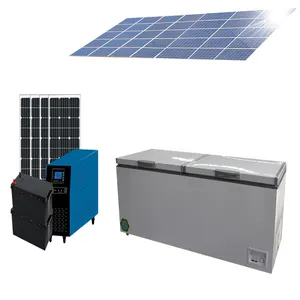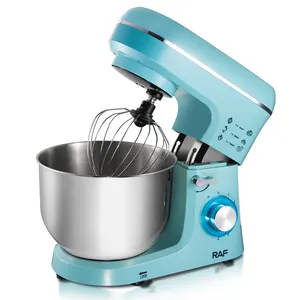Popular in your industry




 Ready to Ship
Ready to Ship












Related Searches:


















 Ready to Ship
Ready to Ship



Top categories
About portable air conditioning venting
Introduction
As summer temperatures soar, the need for a cool, comfortable indoor environment becomes paramount. Portable air conditioners offer a flexible and efficient solution, but their effectiveness hinges on proper venting. This article serves as your ultimate guide to understanding and implementing the venting process for portable air conditioners. We delve into the mechanics of these units, the importance of venting, the different types of portable air conditioners, and the various venting options available. We also explore alternative venting methods for spaces without windows and provide tips for maintaining your unit for optimal performance.
Understanding Portable Air Conditioners
Portable air conditioners work by pulling hot air from an area and transferring it outside. The AC unit has a motor that cools the air circulated through the room and removes excess humidity. The primary purpose of your portable air conditioner is to remove heat from the room and transfer it outside. Key components include the refrigerant, which facilitates the heat transfer, and the compressor, which changes the refrigerant from a liquid to a gas. A fan moves the air over the air conditioning coils to transfer heat and humidity. What sets apart a portable AC is every component is within one small unit.
Why Venting is Crucial for Portable Air Conditioners
Venting is crucial for portable air conditioners as they operate like self-contained heat pumps. They collect heat from a room and expel it elsewhere via an exhaust vent. Venting doesn't necessarily need to be through a window, as long as there's a way to send the heat outside. If the heat from the exhaust fan re-enters the intake of the air conditioner, it results in energy wastage. Therefore, venting is essential for the efficient operation of portable air conditioners and to prevent unnecessary energy consumption.
Types of Portable Air Conditioners: Single Hose vs Dual Hose
Portable air conditioners come in two types: single-hose and dual-hose. Single-hose units are best for smaller rooms, as they work harder and consume more energy in larger spaces. They draw warm air and moisture from the room and expel it outside, creating a negative pressure that draws in outside air. Dual-hose units, on the other hand, are more efficient for larger spaces. They have two hoses: one for exhaust and one for intake. They draw in outside air to cool the compressor and condenser units, and expel warmed air outside. They are more expensive and less portable than single-hose units.
The Venting Process Explained
Venting a portable air conditioner is crucial for its efficient operation. You have several options, such as using a drop ceiling, sliding glass door, or a dryer vent. Venting through a wall or sliding door can be efficient when conventional methods are not available. However, it may require professional installation. Venting through a ceiling or a dryer vent is possible, but not always the most effective due to the distribution of cool air and the capacity of the vent. Venting through an unused chimney or an exterior wall are other alternatives, but they come with their own set of considerations.
Venting Through a Window
Portable ACs don't necessarily need to vent out a window, but it's a common and efficient method. The most common issues with window venting are kinked hoses and leaking window seals. To prevent these, ensure a short, straight path for air to travel and use the foam tape included with your AC for a tight seal. If the window doesn't seal completely, consider using removable caulking or window sealing tape. Venting outside is the most sensible option in most cases, as it prevents the heat from the exhaust fan from being wasted.
Venting Through a Wall
Venting a portable air conditioner through a wall can be challenging, especially if the vent's diameter is smaller than the hose. In such cases, a 'dryer vent reducer' can be used to fit the hose into the vent. Alternatively, PVC piping that fits inside the vent can be used. The hose can be attached to the PVC pipe with heat-resistant tape. However, ensure the hose is securely attached to prevent it from detaching due to the heat generated by the air conditioner.
Venting Through a Door
Sliding Door Air Conditioner Kits are an innovative solution for venting portable air conditioners through a sliding door. With a maximum adjustable length, they're designed to suit various exhaust hose sizes. The kit features a fully sealed design, ensuring more stability and reliability. Before purchasing, ensure the diameter of your AC air intake outlet and air exhaust outlet is compatible. These kits do not include the exhaust hose.
Alternative Venting Options
Venting a portable air conditioner without a window can be achieved through various methods. One effective way is using a sliding door vent kit, which comes with all necessary components. Another method is venting through a drop ceiling, keeping the venting discreet. If you have access to a dryer vent, it can be used for efficient ventilation. A drop window vent kit can be used if you have a drop window in your space. Lastly, a non-functional chimney or fireplace can be repurposed for venting.
Venting Without a Window
Not all portable air conditioners need to be vented out a window. Alternative methods include venting through doors, walls, or ceilings. Venting through walls and ceilings can be more complex but is advantageous for aesthetic purposes. However, this may cause wear on the hose, so using a superior quality hose is recommended. Another option is using an evaporative cooler, which doesn't require ventilation. However, its effectiveness is limited in high humidity environments. Therefore, for some, the best option for windowless venting is through doors, walls, or ceilings.
Portable Air Conditioners Without Exhaust
Ventless air conditioners, also known as portable air conditioners without exhaust, are a perfect solution for spaces where traditional AC installation isn't feasible. They are easy to install and don't require an outlet or window for exhaust venting. These units use the process of water evaporation for cooling, making them cost-effective. However, their performance might be affected in highly humid conditions. On the other hand, some ventless ACs use a traditional compressor, ensuring effective cooling irrespective of climate conditions.
Maintaining Your Portable Air Conditioner
Maintaining your portable air conditioner is crucial for its efficiency. Regularly drain the water collected in the unit and clean the air filters to ensure proper air circulation. Check the coils for dirt and debris, and clean them gently to avoid damage. Wipe down the exterior of the unit to keep it free from dust and dirt. When storing your AC unit, ensure it's clean, dry, and if possible, in its original packaging to prevent mold growth. These simple steps can extend the life of your portable AC unit and provide cleaner, cooler air.
Cleaning and Maintenance Tips
Maintaining your portable air conditioner is crucial for its performance. Regularly drain the water collected in the unit and clean the air filters to ensure effective cooling. Check the coils for dirt and debris, and clean them gently to avoid damage. Wipe down the exterior of your unit weekly to prevent blockages. Before storing your AC unit, drain the tank, clean the filter, and run it in fan mode to eliminate excess moisture. Store it in a clean, dry place to avoid mold growth.
Troubleshooting Common Venting Issues
When venting a portable air conditioner, you may encounter issues. For instance, using your ventilation system's ceiling vents as an exhaust vent may not provide the airflow needed for the AC unit to function properly. Also, single duct units can be less efficient as they suck air from inside the room, which is then replaced by hot outside air. If you're considering window venting, creating a proper seal can be complex. Venting into other rooms might seem like a solution, but it can be inefficient and result in heat leakage. Always consider the specific requirements and limitations of your space when venting your portable AC.
Conclusion
In conclusion, portable air conditioners are a versatile solution for cooling your space, but their efficiency is largely dependent on proper venting. Whether you're venting through a window, wall, door, or even a non-traditional outlet like a chimney, the key is to ensure the heat is effectively expelled outside. It's also crucial to understand the difference between single-hose and dual-hose units, and choose the one that best suits your space. Lastly, regular maintenance, including cleaning and draining, is essential to keep your unit running smoothly. With these insights, you're now equipped to beat the heat with your portable air conditioner.




























